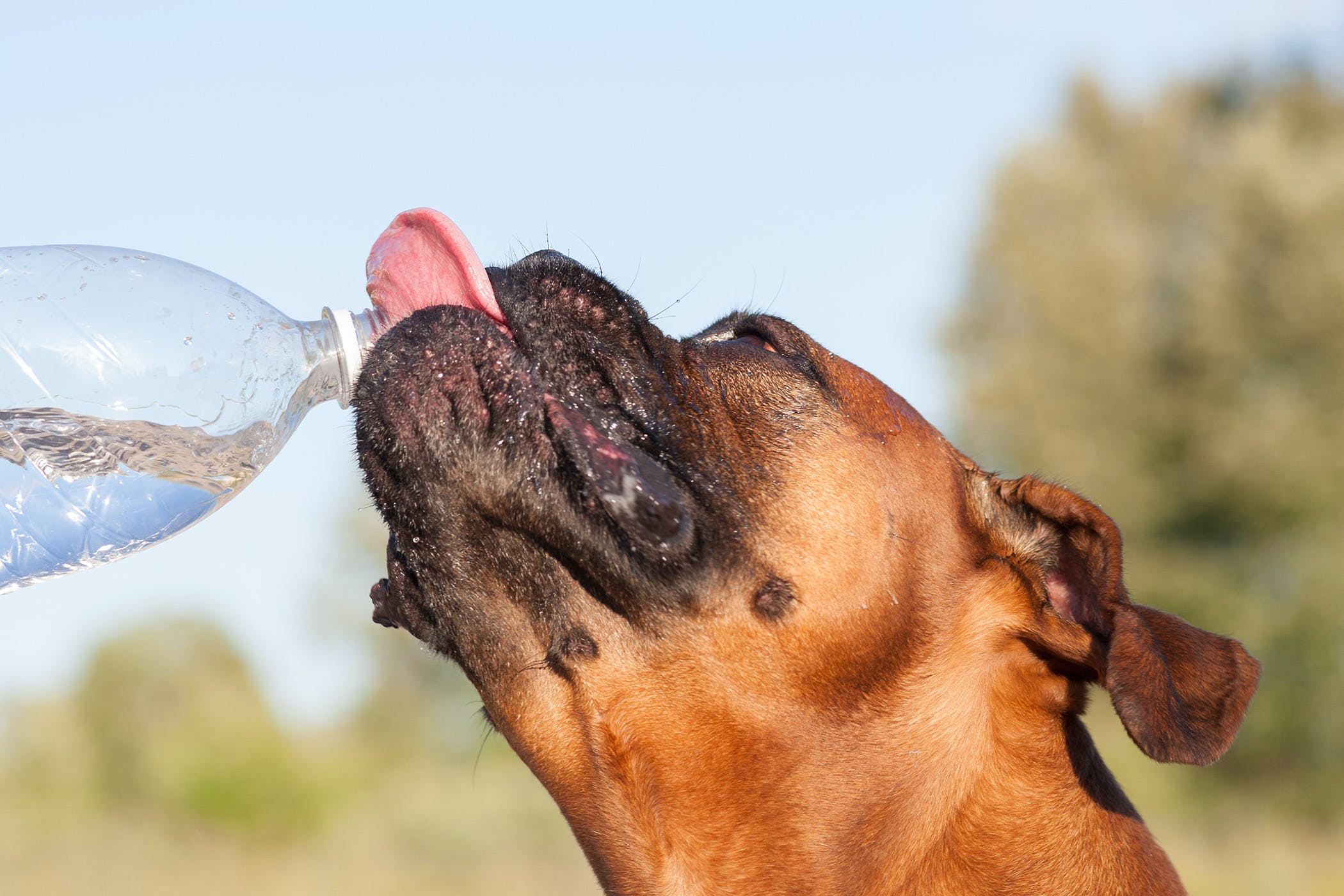Home>Health & Wellness>Common Health Issues>Why Do Dogs With Diabetes Lose Weight


Common Health Issues
Why Do Dogs With Diabetes Lose Weight
Published: January 30, 2024
Learn about common health issues in dogs, including why dogs with diabetes may experience weight loss. Understand the causes and how to manage this condition effectively.
(Many of the links in this article redirect to a specific reviewed product. Your purchase of these products through affiliate links helps to generate commission for Pawsomeoldies.com, at no extra cost. Learn more)
Table of Contents
Introduction
When our furry companions are diagnosed with diabetes, it can be a challenging and concerning time for pet owners. One of the common issues that arise in dogs with diabetes is weight loss. Understanding the reasons behind this weight loss and how to manage it is crucial for ensuring the well-being of our beloved pets.
In this comprehensive guide, we will delve into the intricacies of diabetes in dogs and explore the factors contributing to weight loss in diabetic dogs. We will also discuss the symptoms to watch out for and the essential steps for treatment and management.
As we embark on this journey, it's important to approach the topic with empathy and a deep sense of responsibility towards our canine friends. By gaining a deeper understanding of the impact of diabetes on dogs and the challenges they face, we can provide them with the care and support they need to lead fulfilling and healthy lives.
Let's navigate through the complexities of diabetes in dogs and unravel the mystery behind weight loss in diabetic canines. Together, we can empower ourselves with the knowledge and insights necessary to ensure the well-being of our furry companions.
Read more: When Dogs Have Cancer, Do They Lose Weight?
Understanding Diabetes in Dogs
Diabetes mellitus, commonly referred to as diabetes, is a complex and chronic condition that affects dogs in a manner similar to humans. It occurs when the pancreas fails to produce enough insulin or when the body is unable to effectively utilize the insulin produced. Insulin plays a crucial role in regulating blood sugar levels, allowing cells to absorb and utilize glucose for energy. When this process is disrupted, it leads to elevated blood sugar levels, known as hyperglycemia.
In dogs, diabetes is categorized into two main types: Type 1 and Type 2. Type 1 diabetes, also known as insulin-dependent diabetes, occurs when the pancreas fails to produce sufficient insulin. This type is more common in dogs and requires regular insulin injections to manage blood sugar levels. On the other hand, Type 2 diabetes, also known as non-insulin-dependent diabetes, involves the inadequate utilization of insulin by the body's cells. This type is less common in dogs and may be managed through dietary changes and oral medications.
The risk factors for diabetes in dogs are multifaceted and can include genetic predisposition, obesity, pancreatitis, hormonal imbalances, and certain medications. Breeds such as Poodles, Beagles, and Dachshunds are more prone to developing diabetes. Additionally, female dogs are more likely to be affected than males.
The impact of diabetes on dogs is far-reaching, affecting various bodily functions and systems. Prolonged hyperglycemia can lead to complications such as cataracts, urinary tract infections, kidney disease, and neuropathy. Furthermore, the immune system may be compromised, making diabetic dogs more susceptible to infections and slower wound healing.
Understanding the nuances of diabetes in dogs is essential for pet owners, as it enables them to recognize the signs and symptoms early on, seek prompt veterinary care, and implement effective management strategies. By gaining insight into the underlying mechanisms of diabetes and its implications for canine health, pet owners can play a proactive role in supporting their diabetic pets and enhancing their quality of life.
In the next sections, we will explore the specific factors contributing to weight loss in dogs with diabetes, the telltale signs of this phenomenon, and the crucial steps for treatment and management. Let's embark on this enlightening journey to equip ourselves with the knowledge and resources needed to care for our diabetic canine companions.
Causes of Weight Loss in Dogs with Diabetes
Weight loss in dogs with diabetes can be attributed to several interconnected factors, each contributing to the overall metabolic imbalance experienced by diabetic canines. Understanding these causes is pivotal in addressing the underlying issues and formulating effective strategies for managing weight loss in diabetic dogs.
-
Insulin Deficiency: In dogs with diabetes, the insufficient production or utilization of insulin disrupts the body's ability to regulate glucose. Without adequate insulin, cells are unable to absorb glucose, leading to a state of cellular starvation despite the presence of high blood sugar levels. This metabolic imbalance can result in the breakdown of fat and muscle tissues, leading to weight loss.
-
Increased Urination: Diabetic dogs often experience polyuria, a condition characterized by excessive urination. The frequent and excessive loss of urine leads to fluid and electrolyte imbalances, ultimately contributing to weight loss. Additionally, the increased excretion of glucose in the urine, a phenomenon known as glucosuria, further depletes the body's energy reserves, exacerbating weight loss.
-
Reduced Appetite: Dogs with diabetes may exhibit a decreased appetite, leading to reduced food intake. This diminished caloric intake, coupled with the body's inability to effectively utilize glucose, results in a negative energy balance, prompting the body to utilize its stored fat and muscle for energy production.
-
Metabolic Dysfunction: The metabolic dysregulation associated with diabetes disrupts the body's normal energy utilization and storage processes. As a result, the breakdown of fat and protein for energy production is accelerated, leading to a decline in body weight and muscle mass.
-
Underlying Health Complications: Diabetes in dogs can give rise to secondary health issues such as pancreatitis, urinary tract infections, and gastrointestinal disturbances. These complications can further impact the dog's appetite, nutrient absorption, and overall metabolic health, contributing to weight loss.
Understanding these underlying causes of weight loss in dogs with diabetes underscores the intricate nature of this metabolic disorder and its far-reaching effects on the canine body. By recognizing these contributing factors, pet owners and veterinary professionals can tailor comprehensive treatment plans to address the specific needs of diabetic dogs, with a focus on stabilizing blood sugar levels, restoring metabolic balance, and supporting healthy weight management.
As we delve deeper into the realm of diabetic canine care, it becomes evident that a multifaceted approach is essential in addressing the complex interplay of factors contributing to weight loss. By unraveling the underlying causes and their implications, we pave the way for a more informed and proactive approach to managing weight loss in dogs with diabetes.
Symptoms of Weight Loss in Dogs with Diabetes
Identifying the symptoms of weight loss in dogs with diabetes is crucial for early intervention and effective management of this complex condition. While weight loss itself is a prominent indicator of metabolic imbalance, there are several accompanying symptoms that pet owners should be vigilant about. These symptoms serve as red flags, prompting timely veterinary assessment and tailored care for diabetic dogs experiencing weight loss.
-
Excessive Thirst and Urination: Dogs with diabetes often display polydipsia (excessive thirst) and polyuria (excessive urination) due to the body's attempt to eliminate excess glucose through urine. The increased fluid intake and subsequent frequent urination contribute to dehydration and electrolyte imbalances, exacerbating weight loss.
-
Increased Appetite: Paradoxically, diabetic dogs may exhibit an increased appetite, known as polyphagia, as the body attempts to compensate for the inability to utilize glucose effectively. Despite consuming more food, the dog experiences weight loss due to the metabolic disturbances associated with diabetes.
-
Lethargy and Weakness: The inadequate utilization of glucose by cells results in reduced energy production, leading to lethargy and weakness in diabetic dogs. This lack of energy contributes to decreased physical activity and muscle wasting, further exacerbating weight loss.
-
Change in Body Condition: Pet owners may notice a visible decline in their dog's body condition, characterized by a loss of muscle mass and subcutaneous fat. The dog's overall appearance may become gaunt and emaciated, signaling the impact of diabetes on the body's metabolic processes.
-
Unexplained Weight Loss: While weight loss is a hallmark symptom, it is essential to monitor the rate and extent of the dog's weight loss. Unexplained and rapid weight loss in the absence of dietary changes or increased physical activity warrants immediate attention and veterinary evaluation.
-
Altered Gait and Mobility: Diabetic dogs may exhibit changes in their gait and mobility, often due to muscle weakness and neuropathy resulting from prolonged hyperglycemia. These changes can further contribute to reduced physical activity and muscle atrophy, perpetuating the cycle of weight loss.
-
Poor Wound Healing: Impaired wound healing is a common manifestation of diabetes in dogs. The body's compromised immune response and reduced tissue regeneration capacity contribute to delayed wound healing, which can be indicative of the systemic impact of diabetes and its role in weight loss.
By recognizing these symptoms and their interconnectedness, pet owners can proactively seek veterinary care and collaborate with professionals to develop tailored management plans for their diabetic dogs. Early detection and intervention not only mitigate weight loss but also address the underlying metabolic imbalances, promoting the overall well-being of canine companions living with diabetes.
As we navigate the intricate landscape of symptoms associated with weight loss in dogs with diabetes, it becomes evident that a keen understanding of these indicators is pivotal in providing holistic care for diabetic canines. By remaining vigilant and responsive to these symptoms, pet owners can play an active role in supporting the health and vitality of their beloved dogs, fostering a nurturing environment where diabetic dogs can thrive despite the challenges posed by this condition.
Treatment and Management of Weight Loss in Dogs with Diabetes
Addressing weight loss in dogs with diabetes necessitates a comprehensive and tailored approach that encompasses various facets of care, including dietary management, insulin therapy, and supportive measures to restore metabolic balance and promote healthy weight maintenance.
Read more: Why Do Dogs With Diabetes Pee In The House
Dietary Management:
A pivotal aspect of managing weight loss in diabetic dogs revolves around dietary modifications. A carefully curated diet, in consultation with a veterinary nutritionist, can help regulate blood sugar levels and address the nutritional needs of diabetic dogs. The diet should prioritize high-quality protein sources, complex carbohydrates, and essential fatty acids while minimizing simple sugars and excessive fat content. Portion control and consistent feeding schedules play a crucial role in stabilizing blood sugar levels and preventing fluctuations that contribute to weight loss.
Insulin Therapy:
For dogs with Type 1 diabetes, insulin therapy is the cornerstone of treatment. Administering insulin as prescribed by a veterinarian is essential for regulating blood glucose levels and addressing the underlying insulin deficiency. Close monitoring of blood glucose levels, in collaboration with veterinary professionals, allows for adjustments in insulin dosage to achieve optimal glycemic control. By stabilizing blood sugar levels, insulin therapy mitigates the metabolic disturbances that contribute to weight loss in diabetic dogs.
Regular Exercise:
Incorporating regular, low-impact exercise into the daily routine of diabetic dogs is beneficial for promoting muscle strength, enhancing metabolic function, and supporting weight management. Exercise helps improve insulin sensitivity, facilitating the utilization of glucose by cells and reducing the risk of muscle wasting. However, exercise regimens should be tailored to the individual dog's health status and coordinated with the veterinary team to ensure safety and efficacy.
Monitoring and Veterinary Care:
Regular veterinary check-ups and diligent monitoring of the dog's body weight, appetite, and overall well-being are essential components of effective management. By closely observing the dog's response to treatment and promptly addressing any fluctuations in weight or health, pet owners and veterinary professionals can collaboratively fine-tune the management plan to suit the dog's evolving needs.
Read more: Why Do Dogs With Diabetes Go Blind?
Supportive Care:
In addition to the core components of treatment, providing diabetic dogs with a nurturing and stress-free environment is crucial for their overall well-being. Minimizing environmental stressors, ensuring consistent routines, and offering emotional support can positively impact the dog's mental and physical health, contributing to a holistic approach to weight loss management in dogs with diabetes.
By integrating these multifaceted strategies, pet owners and veterinary professionals can work together to address weight loss in diabetic dogs comprehensively. This collaborative approach, coupled with a deep understanding of the unique needs of diabetic canines, empowers pet owners to provide their beloved companions with the care and support necessary to navigate the challenges posed by diabetes and promote a fulfilling and vibrant life.
Conclusion
In conclusion, the management of weight loss in dogs with diabetes demands a holistic and multifaceted approach that encompasses dietary modifications, insulin therapy, regular exercise, vigilant monitoring, and supportive care. Understanding the underlying causes of weight loss in diabetic dogs, such as insulin deficiency, increased urination, reduced appetite, metabolic dysfunction, and associated health complications, is pivotal in formulating targeted strategies to address this complex issue.
By recognizing the interconnected symptoms of weight loss, including excessive thirst and urination, increased appetite, lethargy, altered body condition, unexplained weight loss, changes in gait and mobility, and poor wound healing, pet owners can proactively seek veterinary care and collaborate with professionals to develop tailored management plans for their diabetic dogs.
The implementation of dietary management, insulin therapy, regular exercise, vigilant monitoring, and supportive care forms the cornerstone of effective weight loss management in dogs with diabetes. A carefully curated diet, insulin administration as prescribed, tailored exercise regimens, regular veterinary check-ups, and a nurturing environment collectively contribute to stabilizing blood sugar levels, addressing metabolic imbalances, and promoting healthy weight maintenance in diabetic dogs.
As pet owners and veterinary professionals work in tandem to fine-tune the management plan based on the dog's evolving needs, a nurturing and stress-free environment plays a crucial role in supporting the overall well-being of diabetic dogs. By fostering a collaborative and empathetic approach to diabetic canine care, pet owners can empower themselves with the knowledge and resources needed to provide their beloved companions with the care and support necessary to navigate the challenges posed by diabetes and promote a fulfilling and vibrant life.
In essence, the journey of managing weight loss in dogs with diabetes is characterized by compassion, resilience, and a deep commitment to the well-being of our furry companions. By embracing a proactive and comprehensive approach to care, pet owners can create a nurturing environment where diabetic dogs can thrive, embodying the resilience and unwavering spirit that define the bond between humans and their canine counterparts.













